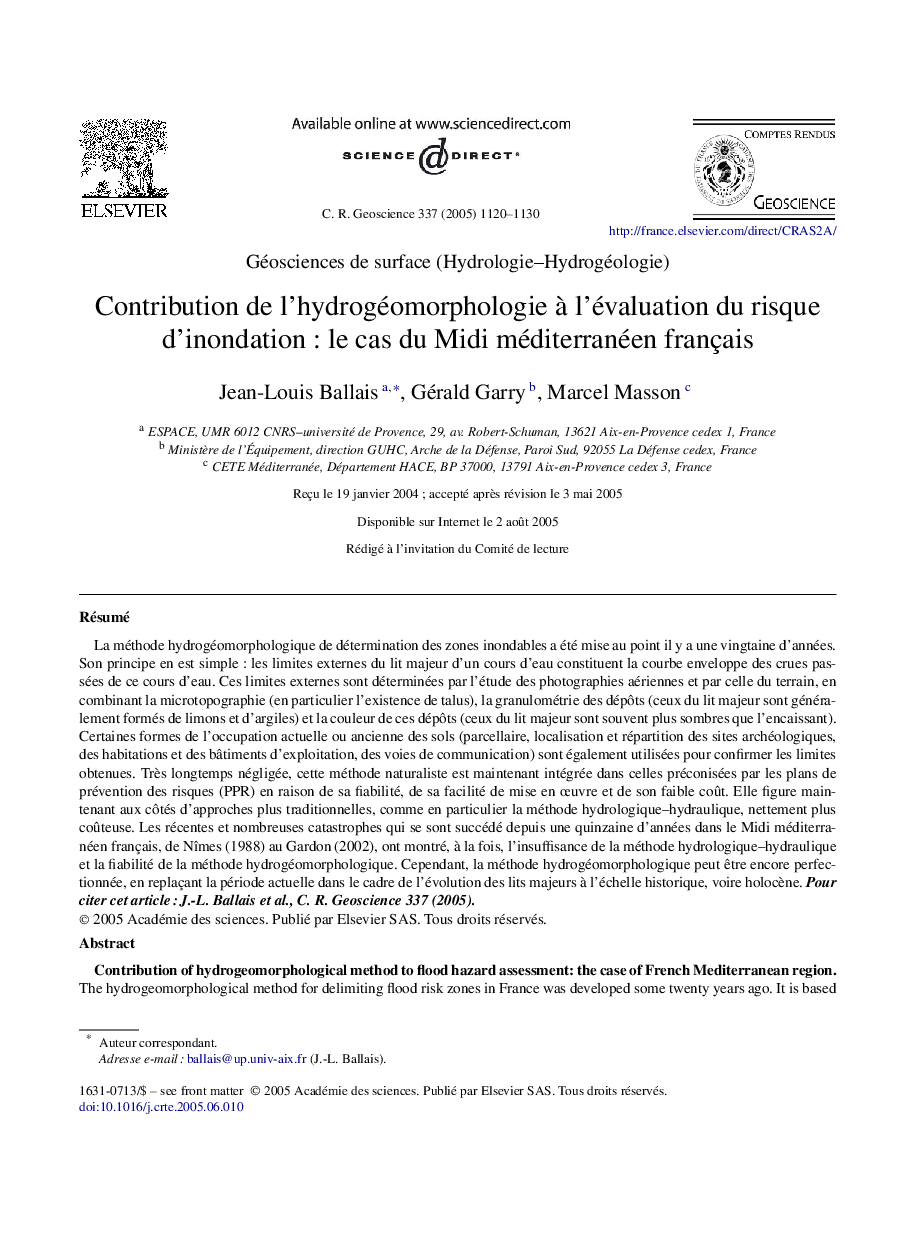| Article ID | Journal | Published Year | Pages | File Type |
|---|---|---|---|---|
| 9461994 | Comptes Rendus Geoscience | 2005 | 11 Pages |
Abstract
The hydrogeomorphological method for delimiting flood risk zones in France was developed some twenty years ago. It is based on a simple principle: the outer limits of a stream's flood plain constitute the outer envelope of past floods. These limits are determined with the use of aerial photographs and field surveys of micro-topography as well as analyses of deposit granulometry and colour. Indications of present or past land use (fields, location and distribution of archaeological sites, houses and farm buildings, roads) are also useful. This field-based method long remained ignored, but being reliable, easy to use and inexpensive, it has now been incorporated into the package of methods recommended by French risk-prevention plans (PPRI). The many recent catastrophes that have occurred over the past fifteen years in the Mediterranean regions of southern France demonstrated both the inadequacy of the hydrological-hydraulic method and the reliability of the hydrogeomorphological method, which can, however, be improved by setting observations for the present period against information on the more ancient Holocene evolution of flood plains. To cite this article: J.-L. Ballais et al., C. R. Geoscience 337 (2005).
Keywords
Related Topics
Physical Sciences and Engineering
Earth and Planetary Sciences
Earth and Planetary Sciences (General)
Authors
Jean-Louis Ballais, Gérald Garry, Marcel Masson,
